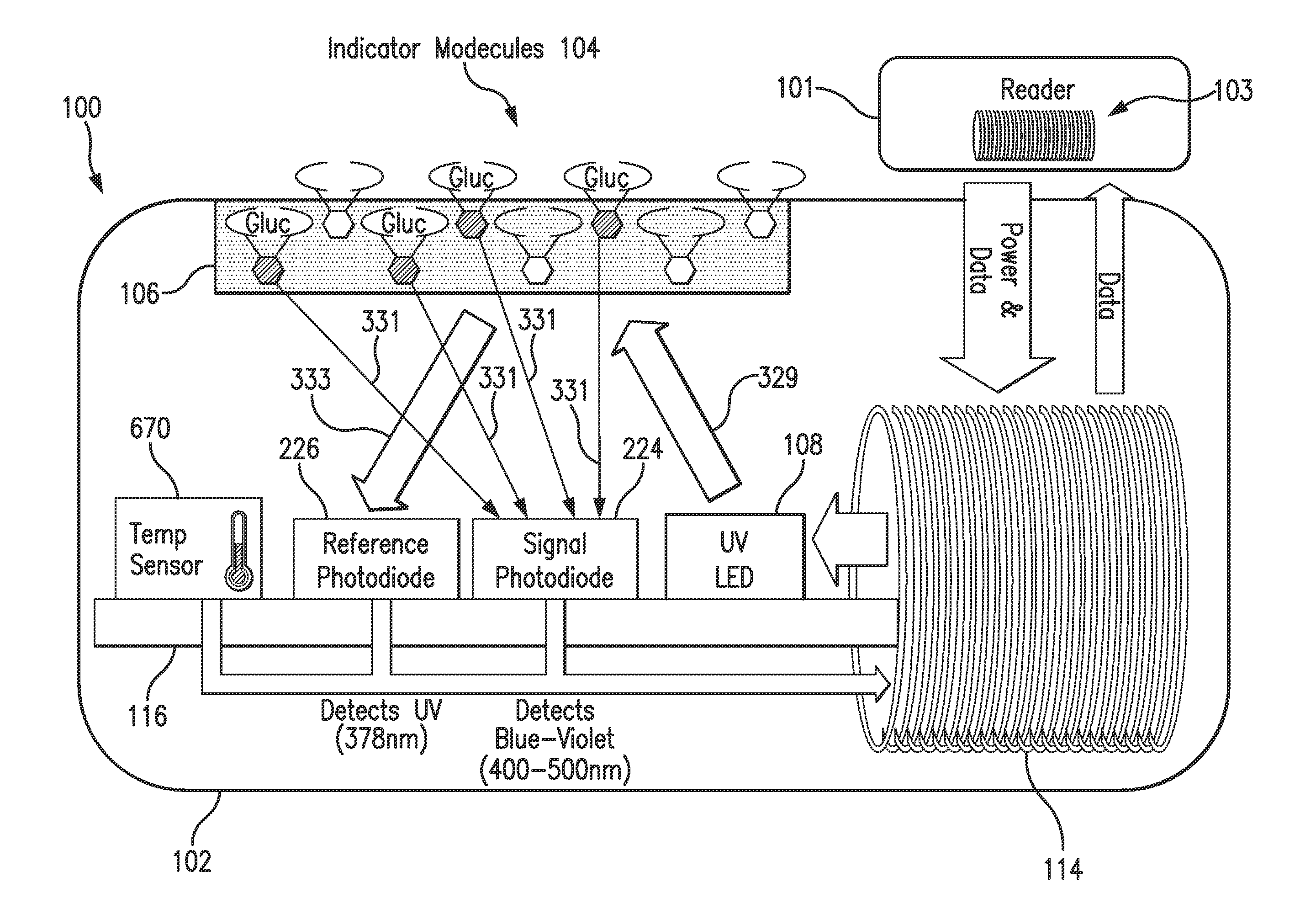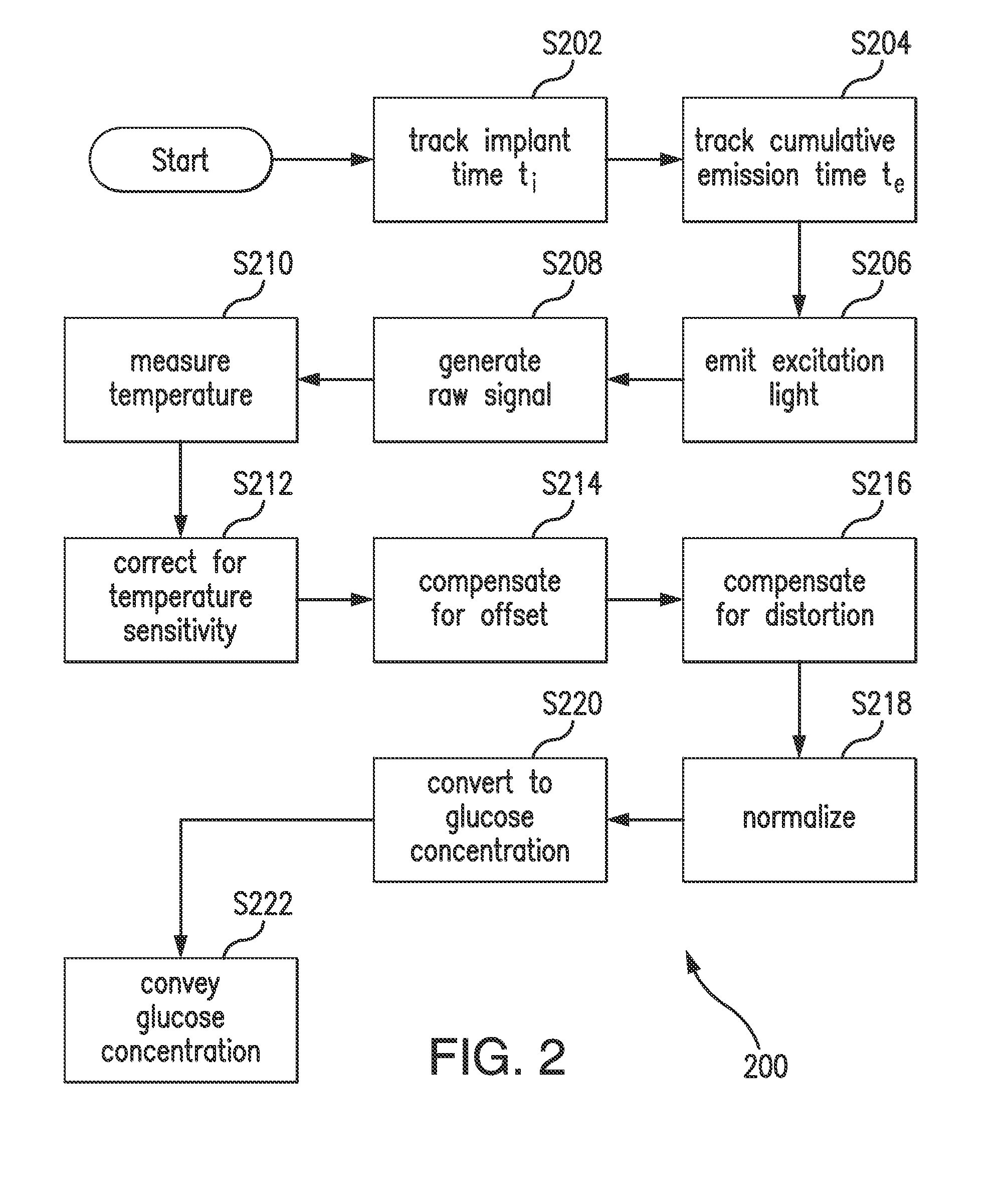Purification of glucose concentration signal in an implantable fluorescence based glucose sensor
a fluorescence-based glucose sensor and glucose concentration technology, which is applied in the field of purification of glucose concentration signal in implantable fluorescence-based glucose sensors, can solve problems such as affecting the accuracy of glucose concentration measurement produced from raw signals
- Summary
- Abstract
- Description
- Claims
- Application Information
AI Technical Summary
Benefits of technology
Problems solved by technology
Method used
Image
Examples
Embodiment Construction
[0023]FIG. 1 is a schematic view of a sensor system embodying aspects of the present invention. In one non-limiting embodiment, the system includes a sensor 100 and an external sensor reader 101. In the embodiment shown in FIG. 1, the sensor 100 may be implanted in a living animal (e.g., a living human). The sensor 100 may be implanted, for example, in a living animal's arm, wrist, leg, abdomen, or other region of the living animal suitable for sensor implantation. For example, in one non-limiting embodiment, the sensor 100 may be implanted between the skin and subcutaneous tissues. In some embodiments, the sensor 100 may be an optical sensor (e.g., a fluorometer). In some embodiments, the sensor 100 may be a chemical or biochemical sensor.
[0024]A sensor reader 101 may be an electronic device that communicates with the sensor 100 to power the sensor 100 and / or obtain analyte (e.g., glucose) readings from the sensor 100. In non-limiting embodiments, the reader 101 may be a handheld r...
PUM
 Login to View More
Login to View More Abstract
Description
Claims
Application Information
 Login to View More
Login to View More - R&D
- Intellectual Property
- Life Sciences
- Materials
- Tech Scout
- Unparalleled Data Quality
- Higher Quality Content
- 60% Fewer Hallucinations
Browse by: Latest US Patents, China's latest patents, Technical Efficacy Thesaurus, Application Domain, Technology Topic, Popular Technical Reports.
© 2025 PatSnap. All rights reserved.Legal|Privacy policy|Modern Slavery Act Transparency Statement|Sitemap|About US| Contact US: help@patsnap.com



